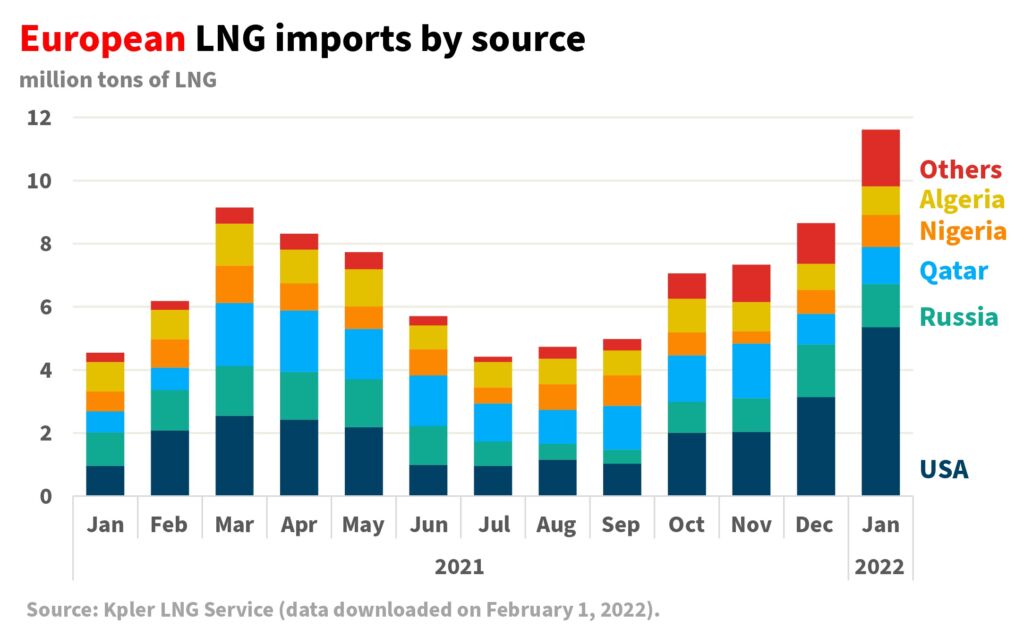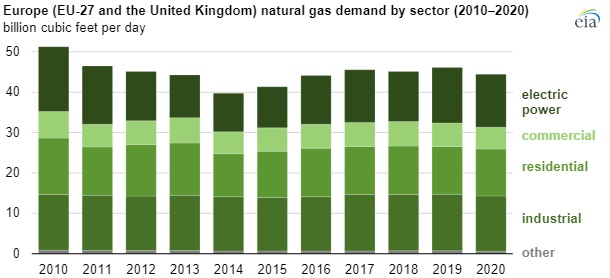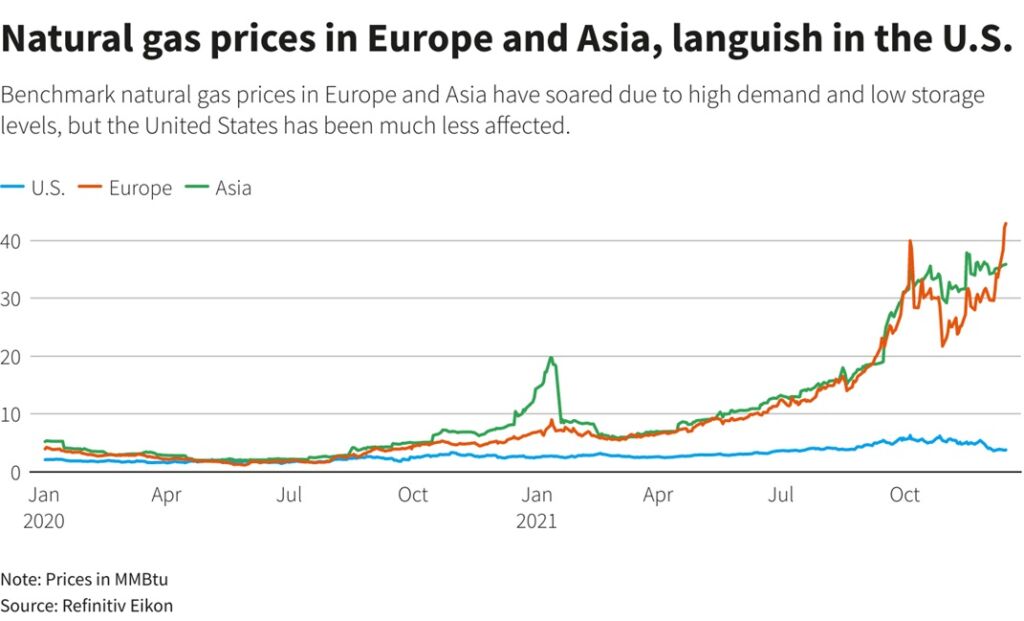Europe primarily relies upon imports for natural gas
The U.S. Energy Information Administration released a graph today showing Europe is mainly dependent upon imports for its natural gas. According to EIA:
Imports of natural gas by both pipeline and as liquefied natural gas (LNG) provided more than 80% of the supply of natural gas to the countries of the European Union (EU-27) and the United Kingdom (UK) in 2020, up from 65% a decade earlier. During 2020, natural gas imported into the region by pipeline made up 74% of all natural gas imports, and LNG accounted for the remaining 26% of total imports.

Pipeline imports of natural gas into the region come from Russia, Norway, North Africa, and Azerbaijan. Pipeline imports originating in Russia—the largest supplier in the region—grew from about 11 billion cubic feet per day (Bcf/d) in 2010 to more than 13 Bcf/d in 2020 (a low consumption year due to COVID-19 related impacts). Despite construction of new pipelines, imports from Norway averaged around 9 Bcf/d between 2010 and 2020, as development of new fields in the Barents Sea section of the Norwegian offshore Continental Shelf was insufficient to offset declines from mature fields in the North Sea.
Liquefied natural gas imports come from a variety of countries, but the United States is number 1 in terms of nations supplying this segment of the European gas market.

Europe’s lack of domestic natural gas production is largely a self-inflicted wound. EIA writes:
Regional production has played a smaller role in supplying European natural gas needs over the past decade. From 2010 through 2020, natural gas production in the EU-27 countries and the UK declined by more than 50%, from 18 Bcf/d in 2010 to 9 Bcf/d in 2020. This decline is the result of resource depletion as well as initiatives to fully phase out natural gas production in the region.
Limited natural gas supplies have caused prices to skyrocket. This harms residential customers, but much of the demand for gas in Europe is used for industrial and commercial purposes.

These industries simply cannot compete with natural gas prices in Europe, which are currently around 7.5 times higher than they are in the United States, as you can see in the graph below.

Europe forgot an important lesson: energy security is national security. By outsourcing their energy supplies to other regions, they put themselves at the mercy of global commodity markets. The United States would be wise to learn from Europe’s mistakes and continue to pursue energy policies that encourage domestic production and low costs.
Unfortunately, that’s basically the exact opposite of the strategy President Biden has pursued.